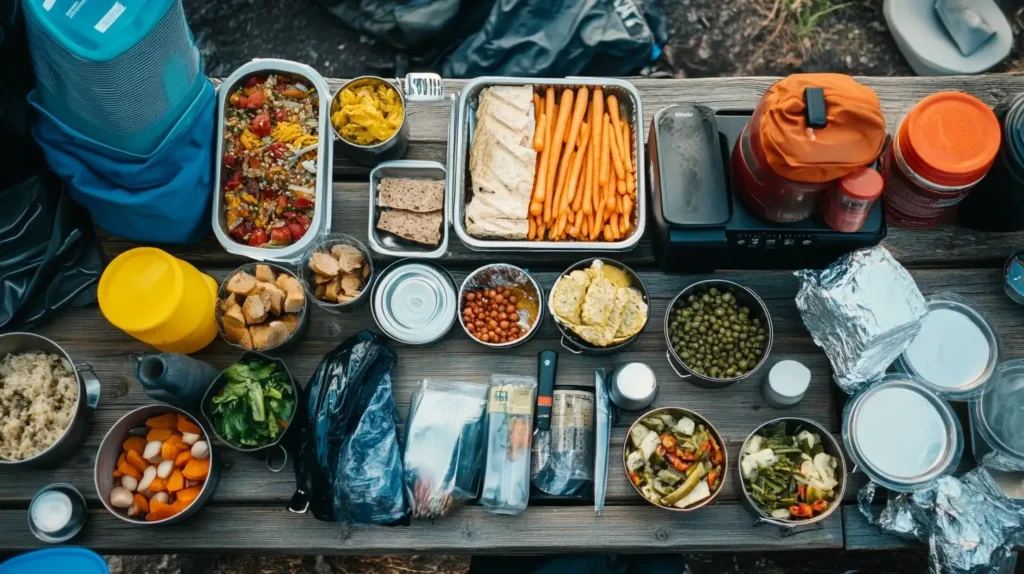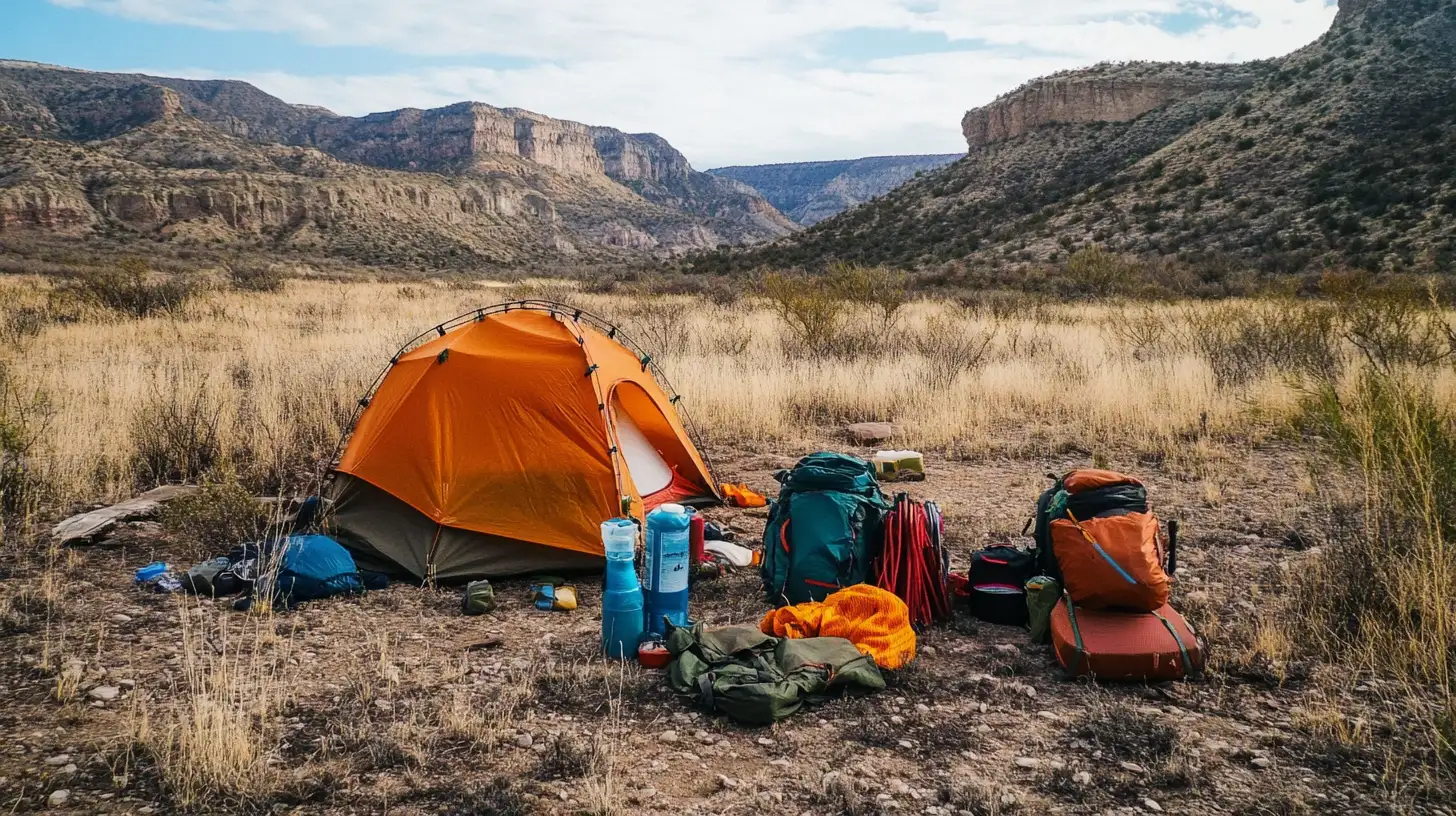Table of Contents
Backpacking combines adventure and self-reliance, and having the right recipes is crucial to fuel your journey. A carefully curated meal plan ensures you stay energized while keeping your pack lightweight. This guide offers a comprehensive look at backpacking recipes with a variety of meal ideas, preparation tips, and insights into crafting delicious meals on the trail.
The History and Origin of Backpacking Recipes
The concept of backpacking recipes has evolved alongside human exploration, survival, and adventure. The need for lightweight, long-lasting, and nutrient-rich food has been a constant challenge for travelers, soldiers, and explorers throughout history. Here’s a look at how backpacking recipes have developed over time:
1. Ancient Origins: Sustenance for Nomads and Hunters
- Nomadic Tribes: Early humans, who led nomadic lifestyles, developed methods to preserve food for long journeys. They relied on dried meats (early forms of jerky), grains, and nuts, which were portable and calorie-dense.
- Preservation Techniques: Smoking, salting, and drying were some of the earliest methods used to ensure food lasted longer without refrigeration.
- Portable Foods: Items like dried fruits, flatbreads, and roasted grains were easy to carry and provided the energy needed for hunting and gathering.
2. Military Influence on Backpacking Meals
- Roman Soldiers: The Roman legions carried portable rations, including hardtack (a type of dense biscuit), dried meats, and fermented drinks, which were designed to withstand long campaigns.
- Napoleonic Wars: In the early 19th century, food preservation advanced with the invention of canning. Though heavy for modern backpacking, canned foods provided a crucial step in creating long-lasting portable meals.
- World War II: Modern dehydrated and freeze-dried foods were developed to feed troops efficiently. These meals, often referred to as “Meals Ready-to-Eat” (MREs), became the blueprint for today’s lightweight camping and backpacking meals.
3. Backpacking Recipes in Recreational Hiking
- Rise of Recreational Hiking: In the 20th century, backpacking shifted from survival to recreation. As outdoor activities gained popularity, so did the need for compact, easy-to-cook meals that didn’t compromise on taste or nutrition.
- Dehydrated Foods: Commercially available dehydrated meals for hikers emerged in the mid-20th century. Brands like Mountain House began producing meals specifically for outdoor enthusiasts.
- Homemade Backpacking Recipes: Alongside commercial options, backpackers started creating their recipes using home-dehydrated fruits, vegetables, and meats. These recipes were cost-effective and allowed for personalization.
4. Modern Backpacking Recipes
- Dietary Advancements: With the growing awareness of dietary needs, modern backpacking recipes cater to various diets, including vegan, gluten-free, and high-protein options.
- Lightweight Ingredients: Innovations in freeze-drying and packaging have made it easier to carry calorie-dense meals without the bulk or weight of traditional food.
- Cultural Influences: Modern backpacking recipes often borrow from global cuisines. Popular choices include curry rice, instant ramen, and lentil stews, reflecting a blend of practicality and diverse flavors.
5. The Role of Technology and Sustainability
- Home Dehydration Equipment: Affordable food dehydrators have allowed enthusiasts to prepare lightweight, nutritious meals at home, revolutionizing how hikers plan for long trips.
- Eco-Friendly Packaging: Sustainability has become a priority, with many backpacking meals now using compostable packaging or reusable containers to reduce environmental impact.
- Digital Sharing: Websites, blogs, and social media platforms have made it easier than ever to share and discover new backpacking recipes, fueling creativity among outdoor enthusiasts.
Cultural Significance of Backpacking Recipes
Backpacking recipes are more than just sustenance; they represent a connection to history, culture, and the spirit of adventure. Whether it’s carrying forward ancient preservation techniques or blending modern global flavors, these recipes continue to evolve to meet the needs of explorers worldwide.
By blending traditional methods with modern innovations, backpacking recipes have become an essential part of outdoor culture, ensuring that no matter how remote the adventure, a satisfying meal is always within reach.
Why Prepare Your Backpacking Meals?
Backpacking meals from the store can be expensive, bulky, and often lack the nutritional balance required for high-energy activities. Preparing your meals offers several key advantages:

1. Cost Savings
Pre-packaged backpacking meals can cost upwards of $8–$15 per serving. In contrast, preparing meals at home allows you to buy staple ingredients like oats, pasta, and lentils in bulk for a fraction of the cost. For instance, making a batch of dehydrated chili or one-pot pasta at home can cost less than $2 per serving while offering better taste and nutrition.
2. Customization
Homemade meals cater to dietary preferences and restrictions. Whether you’re following a vegan, vegetarian, or gluten-free diet, or require high-calorie meals for extra endurance, tailoring recipes to your needs is easy. Add protein for strength, carbs for energy, and spices for flavor.
For an example of customization, consider adding versatile ingredients like pumpkin or banana to your desserts. This pumpkin-banana loaf recipe provides a great starting point for a trail-friendly treat.
3. Enhanced Taste and Nutrition
Homemade meals avoid the preservatives and artificial flavors often found in store-bought alternatives. By using fresh or dehydrated ingredients, you can balance taste and nutrients while avoiding excess sodium and sugar.
4. Eco-Friendliness
Backpacking often takes you into pristine natural environments. By using reusable containers, vacuum-sealed bags, and minimal packaging, you reduce waste and minimize your impact on the environment.
Essential Tools and Ingredients
To create satisfying and efficient trail meals, preparation starts with the right tools and ingredients. Here’s what you’ll need:
Tools for Backpacking Cooking
- Lightweight Stove: Compact stoves like Jetboil or MSR are fuel-efficient and easy to carry.
- Collapsible Cookware: Nesting pots and foldable pans save space while offering versatility.
- Multi-Use Utensils: Pack a spork, a multi-tool knife, and silicone tongs.
- Insulated Food Pouches: Keep meals warm while you prepare other components.
- Reusable Bags: Use Ziploc or vacuum-sealed bags to pre-portion ingredients.
Key Ingredients
- Carbohydrates: Instant rice, couscous, pasta, and quinoa provide sustained energy for long hikes.
- Proteins: Freeze-dried chicken, lentils, beans, or jerky are lightweight and nutrient-dense.
- Fats: Nut butter, olive oil, and coconut oil are excellent calorie sources and easy to carry.
- Flavors: Bring pre-mixed spices (garlic powder, curry powder) or sauce packets for added taste.
- Sweeteners: Honey, maple syrup, or dried fruit can enhance desserts and snacks.
Using pantry staples creatively can lead to unexpected recipes.
Recipes for Every Meal
Breakfast Recipes
Breakfast sets the tone for the day. Choose meals that are energy-packed, lightweight, and quick to prepare:
1. Instant Oatmeal Mix
- Ingredients: Oats, powdered milk, dried fruits (raisins, cranberries), nuts, and cinnamon.
- Preparation: Pre-portion servings into Ziploc bags. Add hot water on the trail for a warm, filling meal.
- Tips: Add nut butter or honey for extra calories and flavor.
2. Vegetable Omelet Wraps
- Ingredients: Powdered eggs, freeze-dried vegetables, tortillas.
- Preparation: Rehydrate vegetables while cooking powdered eggs. Wrap everything in a tortilla.
- Tips: Use single-serve hot sauce packets for an extra kick.
3. Trail Pancakes
- Ingredients: Pre-mixed dry batter (flour, powdered milk, sugar, baking powder).
- Preparation: Combine with water and cook on a non-stick skillet.
- Tips: Pair with syrup packets or dried fruit toppings for sweetness.
Lunch Recipes
Midday meals should be lightweight, quick to prepare, and energizing:
1. Tuna Wraps
- Ingredients: Shelf-stable tuna packets, shredded cheese, tortillas.
- Preparation: Spread tuna on a tortilla, sprinkle cheese, and roll up.
- Tips: Add lettuce or mustard packets for variety.
2. Couscous Salad
- Ingredients: Instant couscous, olive oil, freeze-dried vegetables, seasoning (lemon pepper, parsley).
- Preparation: Hydrate couscous with boiling water. Stir in vegetables and olive oil.
- Tips: A squeeze of lemon adds freshness.
3. Peanut Butter and Honey Sandwich
- Ingredients: Nut butter, honey, pita bread.
- Preparation: Spread peanut butter and honey on pita.
- Tips: Substitute honey with jam for a flavor twist.
Dinner Recipes
Dinner should be hearty and restorative, replenishing energy after a long day:
1. One-Pot Pasta
- Ingredients: Pasta, dehydrated mushrooms, tomato powder, jerky strips.
- Preparation: Boil pasta, stir in tomato powder, mushrooms, and jerky.
- Tips: Add grated Parmesan for extra richness.
2. Lentil Curry
- Ingredients: Pre-cooked lentils, curry powder, instant rice, freeze-dried onions.
- Preparation: Heat lentils and onions, mix with curry powder and serve over rice.
- Tips: Coconut oil or ghee adds a creamy texture.
3. Ramen Stir-Fry
- Ingredients: Instant ramen, freeze-dried vegetables, olive oil, soy sauce.
- Preparation: Rehydrate noodles, toss with olive oil, and season with soy sauce.
- Tips: Add tofu or canned chicken for protein.
Snacks and Desserts for Outdoor Adventures
Snacks provide a quick energy boost and are essential for maintaining stamina:
1. DIY Trail Mix
- Ingredients: Nuts, seeds, pretzels, dried fruit, dark chocolate chips.
- Preparation: Combine ingredients in resealable bags.
2. Jerky and Cheese
- Ingredients: Pre-packaged jerky and hard cheeses like cheddar.
- Tips: Pair with crackers for a heartier snack.
3. Homemade Energy Bars
- Ingredients: Oats, nut butter, honey, dried cranberries.
- Preparation: Mix, press into a tray, and let set.
Desserts for Backpacking
Trail desserts are a treat for morale and energy:
1. Chocolate Bark
- Ingredients: Melted chocolate, nuts, dried fruits.
- Preparation: Combine ingredients, cool, and pack.
2. Instant Pudding
- Ingredients: Powdered milk, instant pudding mix.
- Preparation: Mix with water and let set.
For colorful, creative ideas, check out these colorful cookie recipes.
Easy Camping Meals Preparation and Packing Tips
Efficient preparation ensures meals remain lightweight and easy to carry:
- Portion Control: Measure servings based on activity levels.
- Vacuum-Sealing: Prevent spoilage and save space by vacuum-sealing meals.
- Organized Packing: Use color-coded bags for quick access to meals.
Dietary Preferences and Adjustments
Adapt your meals to accommodate various dietary needs:
- Vegetarian/Vegan: Use plant-based proteins like lentils and quinoa.
- Gluten-Free: Swap pasta with rice or polenta.
- High-Calorie Diets: Add olive oil, nuts, and seeds for more energy density.
FAQs
What food is good for backpacking?
Good backpacking food is lightweight, calorie-dense, easy to prepare, and shelf-stable. Popular options include:
- Carbohydrates: Instant rice, pasta, couscous, and quinoa.
- Proteins: Jerky, freeze-dried chicken, lentils, and canned tuna.
- Fats: Nut butter, olive oil, cheese, and seeds.
- Snacks: Trail mix, energy bars, dried fruit, and granola.
- Quick Meals: Dehydrated soups, ramen noodles, and one-pot meals. These foods provide the necessary energy for hiking while being easy to pack and prepare.
Why are backpacking meals so expensive?
Backpacking meals are expensive because of:
- Specialized Processing: Dehydration and freeze-drying processes preserve food for long periods while maintaining nutritional value and reducing weight, which is costly.
- High-Quality Ingredients: Many commercial backpacking meals use organic or specialty ingredients to appeal to health-conscious consumers.
- Convenience Packaging: Lightweight, durable packaging designed for outdoor use adds to production costs.
- Market Demand: Backpacking is a niche market, and the limited production volume of these meals results in higher prices. Making your meals at home is a cost-effective alternative.
What is a good backpacking breakfast recipe?
A great backpacking breakfast is quick to prepare, filling, and energy-packed. One easy recipe is Instant Oatmeal Mix:
- Ingredients:
- 1/2 cup quick oats
- 1 tablespoon powdered milk
- 1 tablespoon dried fruit (raisins, cranberries)
- 1 tablespoon nuts (almonds, walnuts)
- 1 teaspoon cinnamon or brown sugar (optional)
- Preparation:
- Combine all ingredients in a resealable bag at home.
- On the trail, add hot water, stir, and let sit for 2–3 minutes. This recipe is lightweight, customizable, and provides long-lasting energy.
Do backpacking meals go bad?
Yes, backpacking meals can go bad, but their shelf life is typically much longer than regular food due to preservation methods like dehydration or freeze-drying. Here are key points:
Signs of Spoilage: Look for strange odors, discoloration, or compromised packaging. If in doubt, don’t consume the meal. Proper storage ensures meals remain safe and tasty for your trips.
Shelf Life: Most commercial meals last 1–5 years when stored in a cool, dry place.
Homemade Meals: Dehydrated meals prepared at home usually last 6 months to 1 year when vacuum-sealed.
Storage Tips: Keep meals in airtight containers and away from moisture, heat, and sunlight.
Final Thoughts
Preparing backpacking recipes at home offers unmatched flexibility, nutrition, and cost savings while allowing you to enjoy delicious meals on the trail. By using these recipes, tools, and tips, you’ll be well-prepared for any adventure.
For more creative meal ideas, explore the versatile recipes available on Trips Recipes. Every bite on the trail can be as memorable as the journey itself. 🌄

